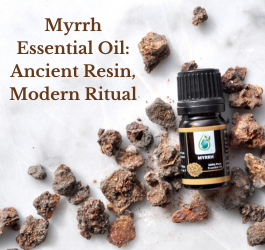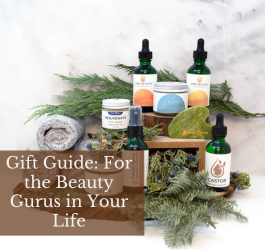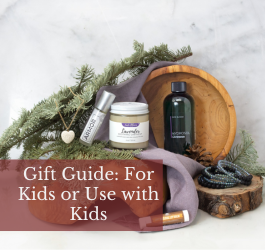There’s a reason Myrrh Oil has been coveted for thousands of years—from sacred temples in Egypt to the apothecaries of early herbalists. Far from being just another essential oil, Myrrh (Commiphora myrrha) is a resin-born powerhouse that smells like history itself: warm, spicy, and grounding in a way citrus and florals can’t touch. Today, it’s as relevant for your skincare shelf as it once was for ancient altars.
So, what makes Myrrh Essential Oil worth a spot in your routine—and how do you actually use it?
Where Myrrh Begins: Resin to Ritual
Myrrh comes from the rugged trees of northeastern Africa and the Arabian Peninsula, where harvesters skillfully tap the bark to draw out amber “tears” of resin. These droplets harden in the desert air before being scraped off by hand—a process that has barely changed in centuries.
At Jade Bloom, that raw resin goes through gentle steam-distillation:
-
Sorted and cleaned to remove bark.
-
Slowly distilled with controlled heat to protect delicate sesquiterpenes.
-
Filtered and bottled in dark glass to preserve potency.
This method isn’t just tradition—it’s chemistry done right. Every drop carries the full complexity of the plant’s bioactive profile, from skin-soothing sesquiterpenols to antioxidant-rich flavonoids.
The Science Behind the Scent
Here’s what’s actually inside Commiphora myrrha oil:
-
Sesquiterpenes (like furanoeudesma-1,3-diene): Calms inflammation and promotes grounded focus.
-
Sesquiterpenols (curzerene, lindestrene): Nurtures cellular health and improves microcirculation.
-
Monoterpenes: Brightens the aroma with a soft freshness.
-
Flavonoids and Tannins: Delivers mild astringency and antioxidant support for resilient skin.
Together, they make Myrrh Oil uniquely capable of renewing skin, supporting respiratory comfort, and creating a meditative atmosphere.
Why Myrrh Stands Apart
Unlike quick-burst oils like lemon or peppermint, Myrrh lingers—physically and emotionally.
-
A Natural Fixative: Extends the life of blends and perfumes.
-
Deeply Grounding: Perfect for meditation, breathwork, or moments you need to pull yourself back to center.
-
Skin Ally: When diluted, it supports scars, dry patches, and delicate mucous membranes without harshness.
-
Sacred Heritage: Used for purification and protection in cultures spanning thousands of years.
It’s not an oil you rush. It’s one you invite in.
How to Use Myrrh Oil (Without Overcomplicating It)
-
For Skin Renewal: Mix 1–2 drops into 5mL of jojoba oil. Massage onto dry patches or scars.
-
For Meditation: Diffuse 3–4 drops while journaling or practicing breathwork.
-
For a Night Ritual: Blend 2 drops with 10mL rosehip oil as a deeply restorative facial serum.
-
For Respiratory Comfort: Add 2 drops to hot water, tent a towel over your head, and breathe deeply.
(Always patch test. Myrrh’s potent—respect it.)
Make It a Daily Ritual
-
Morning: Diffuse Myrrh for 10 minutes to ground yourself before the day unfolds.
-
Midday: Roll a Myrrh-infused blend onto your wrists for a calm reset between tasks.
-
Evening: Combine with Lavender Oil for a soothing scalp massage that signals your nervous system to power down.
Final Thoughts: Why Myrrh Still Matters
Myrrh Oil is more than an ingredient. It’s a bridge—between ancient ritual and modern self-care, between science and spirituality. Whether you’re blending it into a serum or simply inhaling its warmth during meditation, Myrrh invites you to slow down, root deeply, and reconnect.
Ready to experience it for yourself?
Shop 100% Pure Myrrh Essential Oil from Jade Bloom








